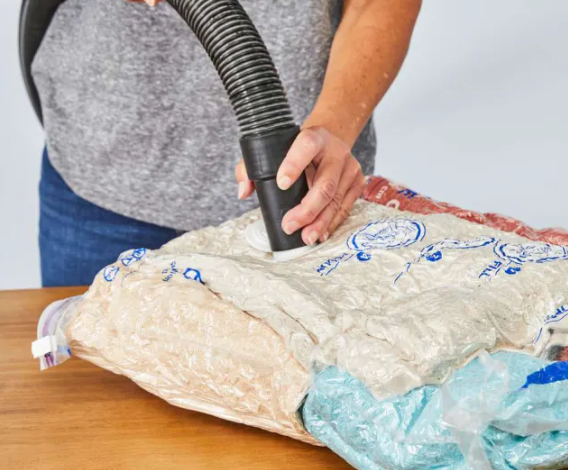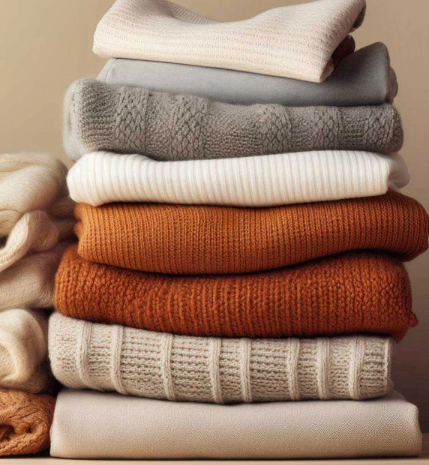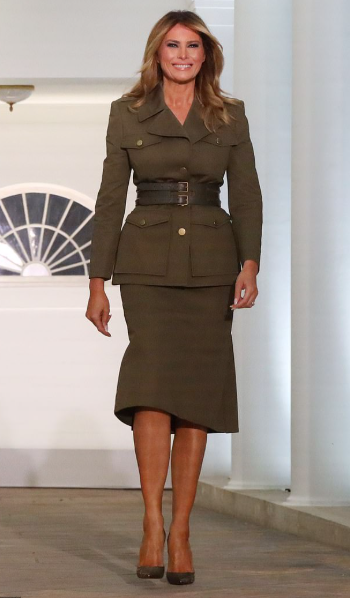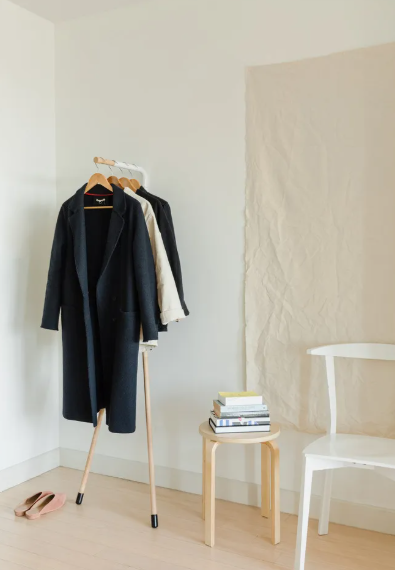
The Pros and Cons of Vacuum Packing Clothes
Vacuum packing has become a popular method for storing clothing, particularly for those looking to save space while keeping their garments organized. Whether for travel or long-term storage, vacuum-sealed bags can compress clothes, making them easier to store. However, this space-saving technique has both advantages and drawbacks, especially when it comes to how it affects different fabrics and how garments are stored.
In this guide, we’ll explore the benefits and potential issues associated with vacuum packing clothes to help you decide if this method suits your needs.
Does Vacuum Packing Clothes Reduce Weight?
A common misconception about vacuum packing clothes is that it reduces the weight of the items. While vacuum sealing does make clothes more compact by removing air, it does not reduce the weight.
Here’s why:
- Weight stays the same: The weight of an item is determined by its material and mass, which doesn’t change when you remove the air from the bag. Although vacuum packing compresses the fabric, the actual material remains the same, so the weight remains unchanged.
- Space efficiency, not weight reduction: Vacuum bags are ideal for maximizing storage space, especially when you need to fit bulky items into tight spaces like suitcases or storage bins. While they may help you pack more into your luggage, they won’t lighten your load. When traveling, it’s important to remember that the weight of your packed clothes still counts toward luggage weight limits.
In summary, vacuum packing is a great way to save space but does not reduce the overall weight of your clothes.
Benefits of Storing Clothes in Vacuum Seal Bags
Vacuum-sealed bags offer several benefits, particularly in terms of space-saving and garment protection:
- Space Efficiency: The ability to compress clothes to a fraction of their original size can make a huge difference, especially when dealing with bulky items like jackets or blankets. This technique is perfect for maximizing storage space in small closets, drawers, or luggage.
- Protection from Dust, Bugs, and Moisture: Vacuum-sealed bags keep dust, lint, and bugs out, creating an airtight environment that helps protect your clothes from damage. By keeping moisture out, vacuum bags also prevent musty odors and mold from forming, which is a significant advantage for long-term storage.
- Portable and Reusable: Vacuum bags are easy to move, making them ideal for traveling or storing items that need to be accessed frequently. Plus, they are reusable, which makes them both eco-friendly and cost-effective in the long run.
Drawbacks of Storing Clothes in Vacuum Storage
While vacuum sealing offers several advantages, it also comes with some challenges, particularly regarding fabric sensitivity and the effort involved:
- Not Suitable for All Fabrics: The intense compression caused by vacuum packing can damage delicate fabrics like silk, chiffon, or beaded garments. These fabrics can become crushed or distorted under pressure, resulting in irreversible damage. Structured garments, such as tailored suits or bridal gowns, are also at risk, as the compression may permanently distort their shape.
- Labor-Intensive Process: Vacuum sealing larger items, like quilts or coats, can be physically demanding. It often requires repeated pumping or pressing to remove air, which can take a lot of time and effort. For those with limited mobility or strength, this process may be tiresome and difficult.
- Risk of Creasing: If clothes are not carefully folded or smoothed before sealing, the vacuum compression can cause deep creases, especially in materials like linen or cashmere. These creases may be difficult to remove and may require extensive ironing or steaming afterward.
Best Fabrics and Items for Vacuum Sealing
Some fabrics respond well to vacuum sealing, while others are better off being stored differently. Here are some items and materials that are well-suited for vacuum packing:
- Off-Season Bedding: Cotton, linen, and bamboo fiber bedding are ideal for vacuum sealing. These materials can be compressed without losing their shape and will expand back to normal once the air is released.
- Casual Clothes: T-shirts, yoga pants, and pajamas are perfect candidates for vacuum sealing. These items tend to wrinkle easily, but any creases from compression will naturally release once the clothes are aired out.
- Hand Towels and Table Linens: Vacuum bags are great for storing towels, napkins, and table runners. These durable fabrics can be compacted without losing their quality, and vacuum bags protect them from dust and pests.
Problematic Fabrics for Vacuum Bags
Certain fabrics and items should not be vacuum packed due to the risk of damage:
- Delicate Fabrics: Fabrics such as chiffon, lace, and sequined garments should never be vacuum sealed. The pressure can crush delicate threads or embellishments, potentially causing permanent damage.
- Tailored Garments: Structured clothing, like suits and wedding dresses, should be stored hanging or using garment bags, as vacuum sealing can warp the shape and affect the fit.
- Chunky Knitwear: Thick knitwear, like bulky sweaters or crocheted items, does not compress evenly in vacuum bags, leading to uneven pressure and misshapen garments.
Tips for Using Vacuum Bags
If you decide to use vacuum bags for storage, here are some tips to ensure your clothes are protected:
- Pre-contain Delicate Items: For delicate fabrics, place them inside a breathable garment bag before sealing them in the vacuum bag. This will prevent direct contact with the plastic, protecting the fabric from snags and damage.
- Smooth Wrinkles: Before sealing, use the Marie Kondo folding technique to minimize wrinkles and maximize space. Smooth out any creases to avoid them becoming permanent during compression.
- Gently Compress: When vacuum packing large items, avoid rushing the process. Take your time to press out air slowly and gently, especially with larger bags, to avoid putting excessive stress on the fabric.
Incorporating Cedar Wood for Added Protection
To prevent pests like moths from infesting your stored clothes, incorporate cedar wood into your vacuum-sealed bags. Cedar naturally repels moths and other insects, making it an excellent addition when storing wool, silk, and other animal-based fabrics.
- Use Cedar Blocks or Sachets: Place cedar blocks or sachets in your vacuum bags to protect your clothes from pests. These natural pest deterrents won’t introduce harmful chemicals into your storage environment and are effective for long-term storage.
- Humidity Control: Cedar also helps regulate humidity by absorbing excess moisture, preventing mold growth if the vacuum seal is compromised.
Conclusion
Vacuum packing can be a great solution for saving space and protecting your clothes from dust, moisture, and pests. However, it’s important to consider the types of fabrics you’re sealing, as delicate materials can suffer damage from the compression process. By selecting the right items for vacuum sealing, using proper packing techniques, and incorporating protective elements like cedar, you can maximize the benefits of this method and keep your clothes fresh and well-preserved for future use.






